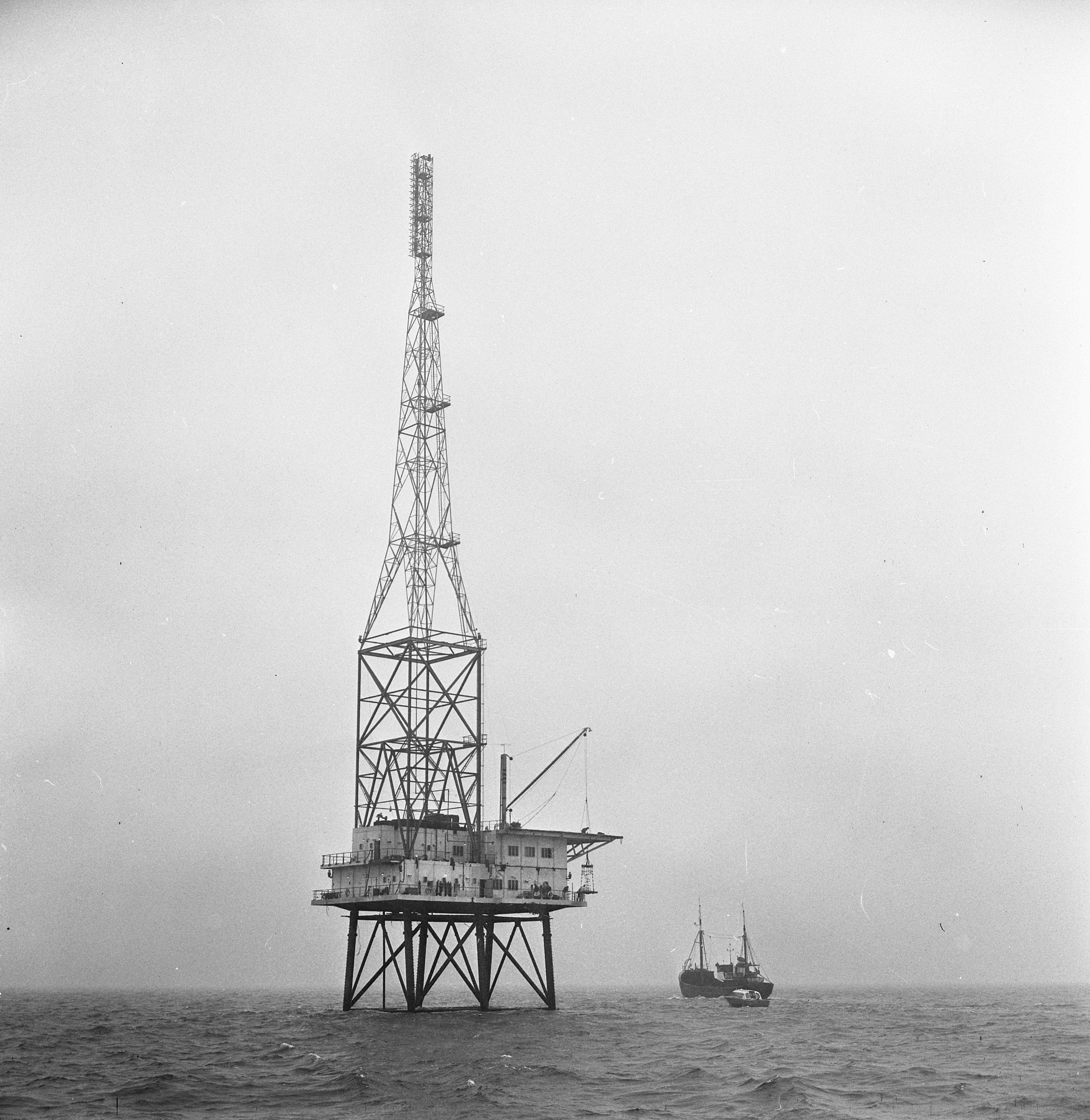Radio Northsea on:
[Wikipedia]
[Google]
[Amazon]
REM Island is a platform built in the Republic of Ireland and towed off the Dutch coast in 1964 as the
 Radio and TV Noordzee was founded in 1963 with land-based offices and broadcast from the sea. The artificial island was built in the harbour of Cork, Ireland. It was towed to its location and anchored in cement on the seabed. On 12 August 1964 a test broadcast was performed and on 15 August regular broadcasting started. The radio service broadcast on 1400 kHz, while on television it used Channel E11 ( System B).
REM stands for ''Reclame Exploitatie Maatschappij''
("advertising exploitation company"). The company intended to broadcast commercial radio and TV. Dutch law at the time did not authorise such broadcasts but the island was outside territorial waters. Other stations, such as Radio Veronica, used a ship.
Radio and TV Noordzee was founded in 1963 with land-based offices and broadcast from the sea. The artificial island was built in the harbour of Cork, Ireland. It was towed to its location and anchored in cement on the seabed. On 12 August 1964 a test broadcast was performed and on 15 August regular broadcasting started. The radio service broadcast on 1400 kHz, while on television it used Channel E11 ( System B).
REM stands for ''Reclame Exploitatie Maatschappij''
("advertising exploitation company"). The company intended to broadcast commercial radio and TV. Dutch law at the time did not authorise such broadcasts but the island was outside territorial waters. Other stations, such as Radio Veronica, used a ship.
PB6REM
'' on the platform on 8 June 2006. Since March 2011 the platform sits in Amsterdam harbour where it serves as a restaurant.
pirate broadcasting
Unlicensed broadcasting, also called pirate broadcasting is a term used for any type of broadcasting without a broadcast license.
Some unlicensed broadcasting, such as certain low-power broadcasting, may be legal. For example, in the United St ...
home of ''Radio and TV Noordzee''. Both stations were dismantled by the Netherlands Armed Forces
The Netherlands Armed Forces ( nl, Nederlandse krijgsmacht) are the military services of the Kingdom of the Netherlands. The core of the armed forces consists of the four service branches: the Royal Netherlands Navy (), the Royal Netherlands ...
. It was 10 km off Noordwijk.
Construction and foundation
 Radio and TV Noordzee was founded in 1963 with land-based offices and broadcast from the sea. The artificial island was built in the harbour of Cork, Ireland. It was towed to its location and anchored in cement on the seabed. On 12 August 1964 a test broadcast was performed and on 15 August regular broadcasting started. The radio service broadcast on 1400 kHz, while on television it used Channel E11 ( System B).
REM stands for ''Reclame Exploitatie Maatschappij''
("advertising exploitation company"). The company intended to broadcast commercial radio and TV. Dutch law at the time did not authorise such broadcasts but the island was outside territorial waters. Other stations, such as Radio Veronica, used a ship.
Radio and TV Noordzee was founded in 1963 with land-based offices and broadcast from the sea. The artificial island was built in the harbour of Cork, Ireland. It was towed to its location and anchored in cement on the seabed. On 12 August 1964 a test broadcast was performed and on 15 August regular broadcasting started. The radio service broadcast on 1400 kHz, while on television it used Channel E11 ( System B).
REM stands for ''Reclame Exploitatie Maatschappij''
("advertising exploitation company"). The company intended to broadcast commercial radio and TV. Dutch law at the time did not authorise such broadcasts but the island was outside territorial waters. Other stations, such as Radio Veronica, used a ship.
Raid
While Dutch authorities were unhappy with the broadcasts, they did not possess the legal right to stop them. However, on the 12 of December, 1964, the government passed the REM law, which split the North Sea into continental sections. The sea bed under REM Island, to which the structure was attached, was therefore declared Dutch territory. Five days later, Korps Mariniers boarded the platform and ended broadcasting.Later use and dismantling
A year after the raid, Radio Noordzee resumed transmissions legally under the name TROS. After that REM Island was used by the government to measure sea temperature and salt concentration. After a failed attempt to sell the island in 2004, the government dismantled it with a goodbye radio event byamateur radio
Amateur radio, also known as ham radio, is the use of the radio frequency spectrum for purposes of non-commercial exchange of messages, wireless experimentation, self-training, private recreation, radiosport, contesting, and emergency communic ...
enthusiasts, with the callsign 'PB6REM
'' on the platform on 8 June 2006. Since March 2011 the platform sits in Amsterdam harbour where it serves as a restaurant.
References
External links
{{coord, 52, 20, N, 4, 20, E, region:NL_type:landmark_source:kolossus-dewiki, display=title Artificial islands of the Netherlands Offshore radio Radio masts and towers in Europe Towers in the Netherlands